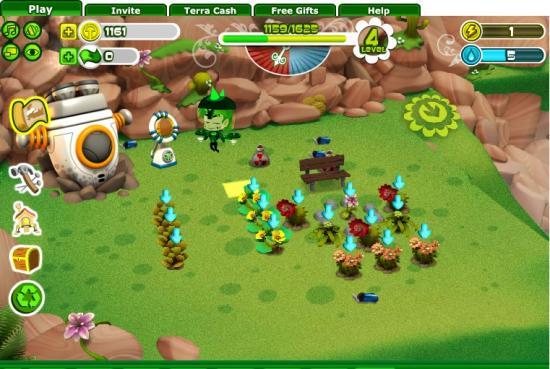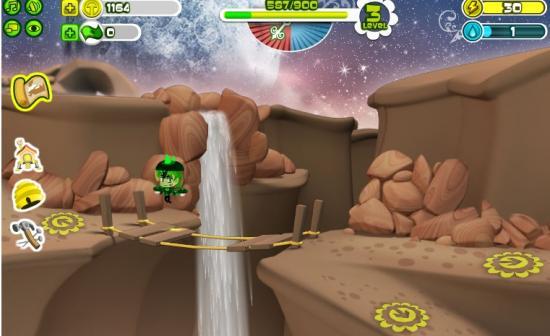- Wondering how to get Monopoly GO! free rolls? Well, you’ve come to the right place. In this guide, we provide you with a bunch of tips and tricks to get some free rolls for the hit new mobile game. We’ll …
Best Roblox Horror Games to Play Right Now – Updated Weekly
By Adele Wilson
Our Best Roblox Horror Games guide features the scariest and most creative experiences to play right now on the platform!The BEST Roblox Games of The Week – Games You Need To Play!
By Sho Roberts
Our feature shares our pick for the Best Roblox Games of the week! With our feature, we guarantee you'll find something new to play!All Grades in Type Soul – Each Race Explained
By Adele Wilson
Our All Grades in Type Soul guide lists every grade in the game for all races, including how to increase your grade quickly!
Interview with Esteban Sosnik, Atakama Labs: Creating Games with a Conscience
Chile has been in the news a lot lately, with the successful miner rescue. Chile is also making a name for itself for its poetry, its wines, and now, its games. We talked someone who has helped put Chile on the map for games development, Esteban Sosnik. We talked to Esteban about his latest venture Atakama Labs, creating “meaningful games” such as Terranova, and of course, Chile.

Chile has been in the news a lot lately, with the successful miner rescue. Chile is also making a name for itself for its poetry, its wines, and now, its games. We talked someone who has helped put Chile on the map for games development, Esteban Sosnik. We talked to Esteban about his latest venture Atakama Labs, creating “meaningful games” such as Terranova, and of course, Chile.
Before starting Atakama Labs, you co-founded Wanako Games which you later sold to Vivendi Games. What made you decide to start up a new games company instead of retire on a beach?
The emergence of social gaming creates amazing opportunities to build scalable and profitable companies.
We had been very interested in games-as-a-service via the virtual-goods business model coming out of Korea and China for a long time. When the opportunity came about for starting a new company again in 2009, it was obvious that social gaming was the realization of that vision in the West, and increasingly more around the world. And really, the beginning of a transformation of the entire games industry. So we jumped on it.
The interest for us to venture into gaming back when we founded Wanako in 2002 was strong, and now it’s twice as much. We are also huge believers in bridging the Latin American development talent with the global gaming audience. And we are sticking to that vision again with Atakama.
Your previous company focused on console game development, while Atakama Labs is focused on iOS and social games. Why did you decide to create games for the iPhone and social networks like Facebook? How does it differ from the console games market?
Principally, these new channels differ in that now you can really get a one-on-one relationship with your end-consumer and operate your business based on those everyday experiences.
As a result, decisions can be made and implemented in 24-hour cycles, making the business more dynamic and interesting from a commercial and even design perspective. In this space you cannot take anything for granted. You must constantly come up with ideas, test it in real-time, analyze the results and then repeat the whole process again. Consoles are for the most part still walled-gardens and do not provide that type of dynamic and ability to tweak the games on an ongoing basis. I expect that to change in the near future however, which is exciting for companies like ours, given our previous experience in console gaming.
Your mission statement is to create meaningful games that make the world a better place. How do you plan to do that? Is there a trade-off between games that are good and games that entertain?
Ultimately, we are in the entertainment business and, as such, our games have to be fun and entertaining. But we also think that there is a space in creating games that touch upon issues that people care about or make users reflect on a particular subject.
In Terranova, we built a game that guides a user through actions related to environmental conservation and sustainability issues, but do it in way that is neither preachy nor takes the issue too seriously. Otherwise we would end up with a game that is no fun. We like to think we are closer to Wall-E than to An Inconvenient Truth.

There have actually been many instances of social game companies using virtual items in games to raise money for good causes, such as Zynga raising money for Haiti and current project headed by Peanut Labs to raise money for Pakistani flood crisis. Why do you think social action works so well with social games and what do you think we’ll see in the future?
I think social action in social games works well because people care about social issues and it feels great to be entertained while helping an issue you care about. Also, doing social good increases your social capital and that is why these actions work so well in social games. We all want to let our friends and family know and get involved in the issues we care about, even by playing games.
In Terranova, we are working with a great organization called the Avina Foundation that supports NGOs all over the world.
Your first game on Facebook, Terranova, definitely fits the bill of being a meaningful game, the premise being you are an astronaut dropped on a desolate planet and you must manage the resources to create a viable ecosystem. How does the game encourage players to learn about taking care of the environment while at the same time being fun?
In Terranova, we touch upon subjects like water conservation, clean energy generation, recycling and climate change through quests that allows users little by little to discover a vast world. We like to believe that with Terranova, we are in a way contributing in making these issues part of our popular culture. That’s more than we could aspire to contribute with our first game.
At the same time, I am reminded of the classic game Black vs White where players can decide to be a good or evil deity and all my friends (including me) ended up picking the dark side. What stops users in games like Terranova from wasting resources and learning the “wrong” lessons? What design decisions did you make to encourages users to made the “right” decisions and do good instead of being evil?
There is no preaching in Terranova. But if you just don’t follow the sustainability path there will be some content you’ll be missing. Recycling for example is a key mechanic of our game, and if you don’t do it it’s just not as fun. Hopefully people feel the same way in the real world.
Terranova is a pretty game, with striking contrasts between the growing planets and the deep space. What is the inspiration behind the graphics and look and feel?
Originally, we wanted to make a sustainability-themed game that could combine elements of sci-fi, exploration and mystery reminiscent of Asimov or Bradbury, within the framework of a social game. For example as the majority of social players are women and play very casually, we made it customizable and quite easy to pick-up and play. We also put social features at the core of the experience in that you need the help of others to make the world a better place and want to share this kind of mission with your friends. The graphic quality is a key part of our company’s vision, to be on the forefront of robust and engaging gaming experiences. We intend to be a leading company producing games that are the future of the industry and I believe that Terranova is a good first example of that. Our graphic engine, the quest system, the exploratory nature of the world and how social features are tied together in Terranova, all reflect this trend we envision.

In Freaking Inkies, your first game you created for the iPhone, you had players juggle a variety of game play concepts at once (target identification, aiming, and color combinations). Can you you give us any insight into the design of the game and why you think it ended up being a success on the iPhone?
One friend defined it in a way I liked a lot. He said that Freaking Inkies is a mix of left-brain and right-brain impulses that has you on one side reacting to movement as you target and shoot the little color monsters, while at the same time concentrating on the logic of color matching. By doing it touch-based, it works great on the iPhone and I think that is part of the reason why it has been a success.
You later released Freaking Indies on the iPad. What do you think of the iPad market for casual games?
We love the iPad and actually have a number of concepts we are developing that fit very well with that platform.
What other games are you working on for both iOS (e.g, iPhone) and Facebook?
For the iPhone we are actually just now releasing Today I Die Again, which is a remake of the wonderful Today I Die by Daniel Benmergui, an award winning game designer. To summarize, it is a game that mixes poetry (yes, you read that right) with music in an amazing open-ended game.
This is the second start-up you have started where your development operations are based in Chile. What can you tell us about the game developer scene in Chile?
When we founded our previous studio, Wanako Games, we became pioneers in the game development scene in Chile and really, most of South America. Since then, the industry has grown a ton and we are super proud of that. It is great to be able to offer to very talented engineers and artists in Chile and across Latin America the opportunity to work developing games, something they had not dreamt of just a few years ago. There is a huge talent pool that is only getting larger as the industry players and the space in general gains credibility locally.
Any last words for your fans?
Thanks for enjoying our games and expect more from Atakama.
More articles...
Monopoly GO! Free Rolls – Links For Free Dice
By Glen Fox
Wondering how to get Monopoly GO! free rolls? Well, you’ve come to the right place. In this guide, we provide you with a bunch of tips and tricks to get some free rolls for the hit new mobile game. We’ll …Best Roblox Horror Games to Play Right Now – Updated Weekly
By Adele Wilson
Our Best Roblox Horror Games guide features the scariest and most creative experiences to play right now on the platform!The BEST Roblox Games of The Week – Games You Need To Play!
By Sho Roberts
Our feature shares our pick for the Best Roblox Games of the week! With our feature, we guarantee you'll find something new to play!All Grades in Type Soul – Each Race Explained
By Adele Wilson
Our All Grades in Type Soul guide lists every grade in the game for all races, including how to increase your grade quickly!







